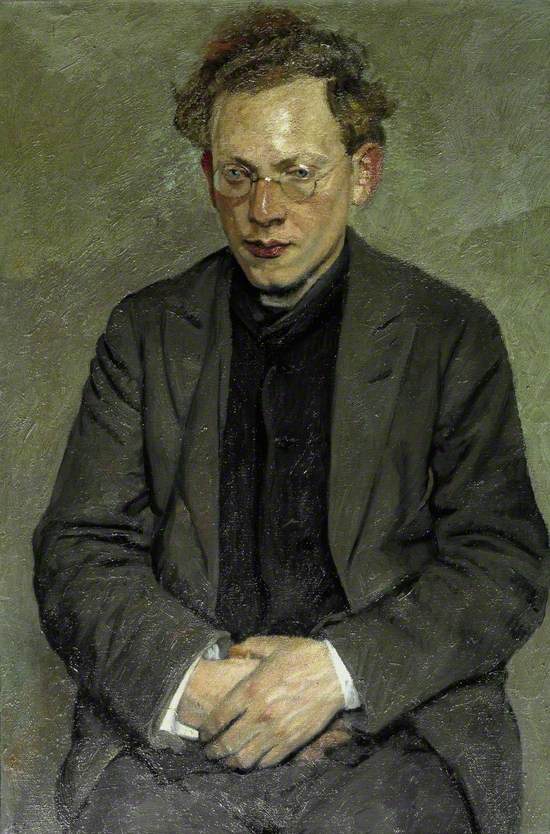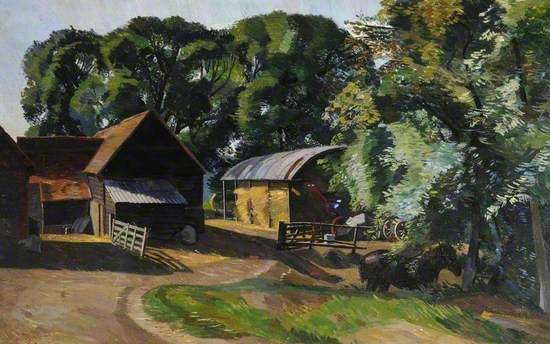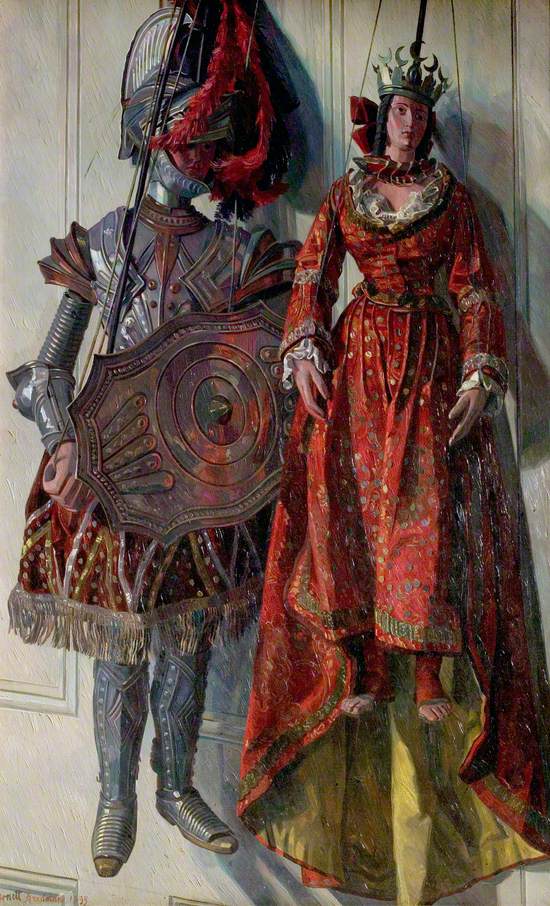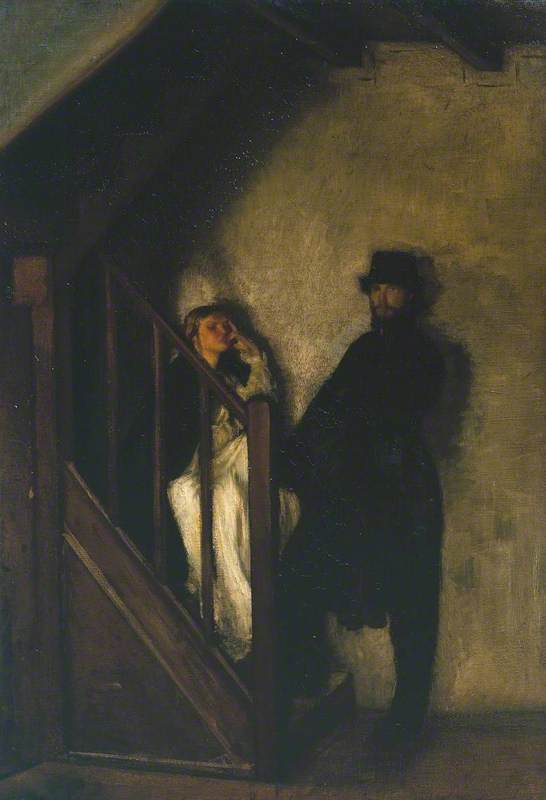Barnett Freedman CBE RDI (1901 – 58) was a pioneering artist at the interface of modern art and design in 20th-century Britain. He was a close friend and peer of Edward Bawden, Enid Marx and Eric Ravilious, who were fellow students at the Royal College of Art in the early 1920s.
Known for his larger-than-life character, his interest in ordinary people shows itself across his work, which also reflects the mid-century ethos of ‘art for all’. Freedman was also a master of lithography and his illustrations set the standard within publishing between the 1930s and early 1950s.
These paintings, along with many other works, are part of Barnett Freedman: Designs for Modern Britain at Pallant House Gallery www.pallant.org.uk
Early Years: 1920s and 1930s
Sir William Rothenstein served as Principal at the Royal College of Art (RCA) from 1920 to 1935. He was a great supporter of many artists who faced social or economic hardship. After three unsuccessful applications for a London County Council (LCC) scholarship, Rothenstein helped Freedman secure a place in the Painting School at the Royal College of Art.
Early Years: 1920s and 1930s
After graduating in 1925, Freedman sought to earn a living as a painter. These years were extremely difficult as he struggled with ill health and living on low income. Despite these hardships, Freedman was an urban dweller and lived in London throughout his life. This lively panoramic painting captures Freedman’s affection for the bustle of daily activity. There is also a theatrical quality to his arrangement of the figures and their placement on the pavement, which adds a sense of storytelling to his work.
Barnett Freedman (1901–1958)
Oil on canvas
H 68.5 x W 183 cm
Salford Museum & Art Gallery
Early Years: 1920s and 1930s
Freedman often talked about how he disliked the open air and the countryside, seeing himself as an urban Londoner. Due to his frequent ill health he found it difficult to sit outside and paint for long periods. However, he did make several painting trips to Dorset and Somerset in the 1920s and 1930s. His sensitively depicted landscapes often feature in his book illustrations and commercial artwork.
Performance and Opera of the Puppets
Music and theatre were an important part of Barnett Freedman’s life. He learnt to play the violin as a child when he was in hospital. Freedman’s wife, Claudia, was from a Sicilian family. It was at their family home in Palermo that Freedman first saw the enchanting Sicilian puppets that he subsequently painted. This painting depicts a puppet of Angelica, the central character in an epic Italian poem ‘Orlando innamorato’ by Matteo Maria Boiardo (1483).Sir John Rothenstein commented of Freedman’s work that: ‘musical instruments and puppets are favourite subjects and these we find rendered with such technical sureness and such rich serenity of spirit as to assure him a place among the creative painters of our time’.
Barnett Freedman (1901–1958)
Oil on canvas
H 100.3 x W 62.2 cm
Nottingham City Museums & Galleries
Captain Freedman the Official War Artist
On 1 March 1940 embarked on a new chapter in his career as an Official War Artist. ‘The Gun’ was painted whilst Freedman was painting sea defences on the Isle of Sheppey, off the northern coast of Kent. It was selected by Sir Kenneth Clark, Director of the National Gallery, to show at the Museum of Modern Art (MoMA) in New York as part of the exhibition ‘Britain at War’, which opened on 22 May 1941.
Captain Freedman the Official War Artist
After returning from France, Freedman was sent to record Eastern Command coastal defences in Kent, including those in Dover, Sheerness and Grain Fort, Rochester. Selected for inclusion in the 'War Pictures Exhibition' at the National Gallery, Sir Kenneth Clark wrote to Freedman praising the work as: ‘an admirable record and solid enduring piece of painting at the same time. I have just hung it in the … National Gallery where it makes its neighbours look very flimsy.’
Barnett Freedman (1901–1958)
Oil on canvas
H 109.8 x W 245.1 cm
IWM (Imperial War Museums)







